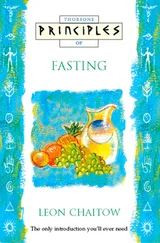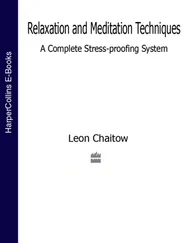Attitudes depend upon a person’s concept of reality. The world as they see it is their own reality, and when this comes into conflict with the external environment stress results. To some extent, all change represents stress. Anything that calls on us to adjust or change from what is normal represents stress. Our concept of what is normal, what is right, how things ought to be is, therefore, the sounding board on which the external environmental factors operate. Beliefs and attitudes often determine the degree of stress, anxiety etc. experienced. For example, the death of someone close is undoubtedly a major stress factor, and yet to someone whose beliefs include a certainty of an after-life or a reincarnation, the death will be seen as part of a continuous process, not an end, and therefore the amount of stress will be minimized. Clearly, what you believe, what you think, and how you see both major and minor events, is linked to your learned responses, which in turn derives from your upbringing and the attitudes and beliefs of those who guided your early years, modified by all that has happened to you since then.
Stress and Changes in Lifestyle
It has been possible to grade the potential of events or changes in our life. In the following chart, scores have been allotted to each event so that the degree of susceptibility to the effects of stress can be estimated. This can be valuable in alerting us to pay extra attention to dealing with those elements of health maintenance which are within our control. Some such methods are explained in Chapter 5.
The stress scale is based on the work of T.H. Holmes and R.H. Rahe ( Journal of Psychosomatic Research (1967), No. 11) and is meant as a guide to the assessment of measurable stress resulting from having to adjust to change. There are many other causes of stress, but it is true to say that a high score on this chart (300 or more) over a short period of time (six months or so) is a strong indicator (affecting 80 per cent of us) that a major illness may follow. If the score is relatively high (anything from 150 to 299) about 50 per cent of us may become ill soon afterwards, and if under 150 points are scored, fewer than 30 per cent become ill. The higher the score the greater the need for stress-proofing.
| Changes in lifestyle |
Scale |
| Death of spouse |
100 |
| Divorce |
73 |
| Marital separation |
65 |
| Jail sentence or being institutionalized |
63 |
| Death of close member of family |
63 |
| Illness or injury |
53 |
| Marriage |
50 |
| Loss of job |
47 |
| Reconciliation with marriage partner |
45 |
| Retirement |
45 |
| Health problem of close member of family |
44 |
| Pregnancy |
40 |
| Sex problems |
39 |
| Addition to family |
39 |
| Major change at work |
39 |
| Change of financial status |
39 |
| Death of a friend |
37 |
| Change in line of work |
36 |
| Change in number of marital arguments |
35 |
| Large mortgage taken out |
31 |
| Mortgage or loan foreclosed |
30 |
| Responsibility change |
29 |
| Child leaves home |
29 |
| In-law problems |
29 |
| Personal achievement realized |
28 |
| Wife starts or stops work |
26 |
| Starting a new school |
26 |
| Leaving school |
26 |
| Change in living conditions |
25 |
| Change in personal habits |
24 |
| Trouble with employer |
23 |
| Change in working hours |
20 |
| Change in residence |
20 |
| Change in recreation |
19 |
| Change in church activities |
19 |
| Change in social activities |
18 |
| Small mortgage taken out |
17 |
| Change in sleeping habits |
16 |
| Change in number of family get-togethers |
15 |
| Major change in eating pattern |
15 |
| Holiday |
13 |
| Christmas |
12 |
| Minor violation of the law |
11 |
It is known that these scores and the position on the scale of some of the incidents vary in different cultures. Different belief systems place the stress of marriage higher in Europe, for example, than in Japan. It can also be seen from the list that stress factors are not always confined to unpleasant events. A holiday, for instance, is seen as a cause of stress. Change itself, pleasant or unpleasant, has a potential for stress. But, even in high-scoring people 20 per cent do not become ill soon afterwards because it is our response, our attitudes, beliefs and underlying health status, that are the real determining factors in whether or not we are badly affected by stress. The list can be used as a guide, but it should be coupled with thoughts on the most appropriate responses, and these responses should then be cultivated.
Anticipated problems
There is another element in life which can often produce even more stress than events and changes which actually take place. This is the highly charged area of anticipated problems or events. Whilst losing a job is indeed a high-scoring stress factor, the anticipation of such a loss presents potentially greater stresses by virtue of the time-scale involved. Once a job has been lost, the reality of the situation determines that the person concerned does something about it. Looking for a new job, making practical arrangements regarding finance etc. are all stressful, but they are positive responses to the event. If, however, there are rumours of possible redundancies, and the anxiety and uncertainty continues for months or years, then the stress induced may be far greater. It is, nevertheless, worth remembering that, in such a case, there are practical steps which can be taken to minimize the effects of the stress once it is realized what is happening.
So, apart from actual changes in life being potentially stressful, the anticipation of such changes also creates stress. It is true, too, unfortunately, that much stress relates to an inability to resolve events which are in the past. Guilt, self-pity, brooding over events gone by – real or imagined – present another major potential for stress generation. Not only does such dwelling on the past produce stressful changes in the body, but it greatly diminishes our ability to function well in the present.
As well as anticipated or remembered unpleasant events, stress can build up from the environment in which we find ourselves. We may have to work amongst a lot of noise, or in very hot or cold conditions. All these things, including the effects of change, are termed ‘stressors’, and of course their potential for harm will depend upon our attitudes, emotions and personality characteristics. The strain, conflict and pressure resulting from such stressors may produce anxiety states which can be short-lived or long-term. Since it is not possible, in the main, to protect oneself against the major changes in life, it should be thought of as desirable and necessary that attitudes should be cultivated which will minimize the effects of the inevitable vicissitudes of life.
External stressors, whilst easy to identify, are less easy to measure and control. These might include difficult working conditions, boring repetitive occupations, and commuting on an unreliable transport system, or having to drive in heavy traffic for hours every day. Our bodies respond to all such stressors in a predictable pattern of internal changes. Stress is, however, cumulative, and a relatively minor event, when added to a large existing stress load, will often prove to be more than the body’s adaptation process can cope with. To a large extent the breaking point can be avoided by taking care of that aspect of the stress jigsaw puzzle most easily alterable, i.e. your personal habits and lifestyle. A change in attitude can dramatically alter the potential for damage created by externally generated stress, but such a change is far more difficult to achieve than, for example, a healthier pattern of rest and exercise, or a change in the food you eat.
Читать дальше












